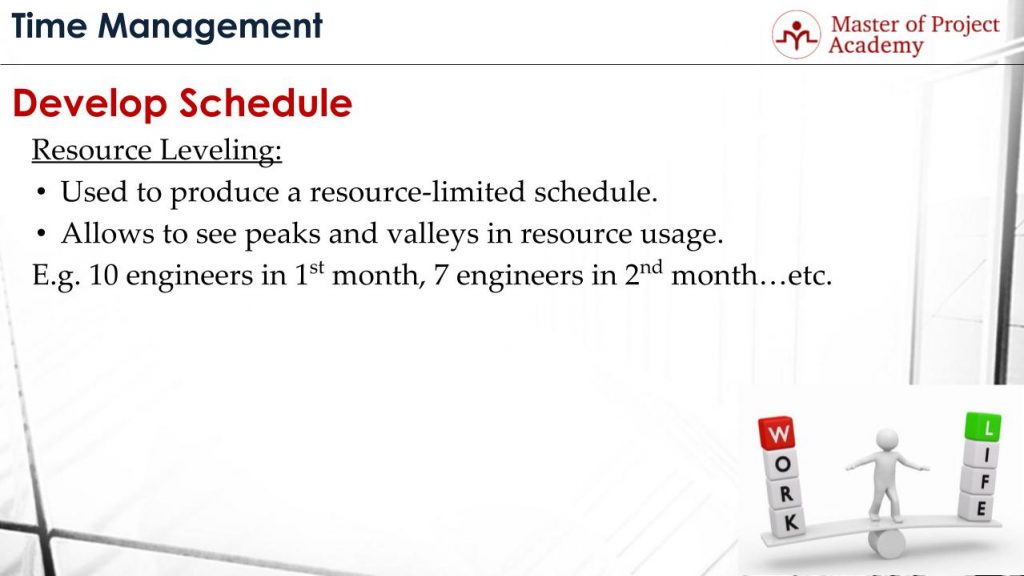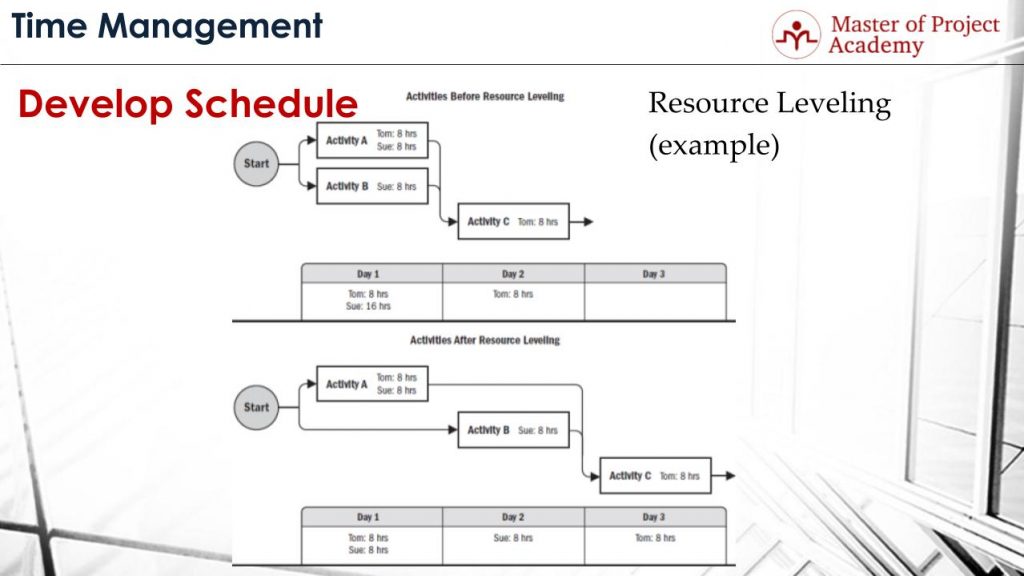When the project schedule is prepared in develop schedule process, the next step will be to start the schedule network analysis. If you are enrolled in a PMP Training, you will know that there are various schedule network analysis forms such as Critical Path, Schedule Compression, What-if Scenario Analysis, Resource Leveling and Critical Chain Method.
Attend our 100% Online & Self-Paced One-Hour Free PMP Training.
As we have said above, resource leveling is another schedule network analysis technique. In this article, we are going to learn the details of Resource Leveling.
What are the benefits?
Resource leveling technique is used to produce a resource-limited schedule as explained in Project Management Professional Certification courses. Limitation of resources is a common constraint of projects. So this is a handy technique to balance your resources while adjusting the start and finish dates of the activities.

Although there is not a mandatory dependency between the project activities, since you have limited resources, these activities can depend on your project resources. For instance, the development of login screen and the development of category page are two independent activities in a software project. But you may have limited software engineers in the project. So this is possible that the same software engineer will work on these two development tasks. So these tasks must be completed one after each other. This is achieved by resource leveling.
Resource leveling allows seeing the peaks and valleys in resource usage in a project. For instance, you might decide to use 10 engineers the in the 1st month of the project, and 7 engineers in the 2nd month of the project etc.
Resource Leveling Example
Now, let’s go over a sample to understand resource leveling better.
Let’s assume that there are 3 activities, A, B, and C, that must be completed in a project.
- Tom and Sue will work on Activity A for 1 day,
- Sue will work on Activity B for 1 day
- after Activity A and B finishes, Activity C can start,
- Activity C will be performed by Tom.

As you see, Activity A and Activity B are not depending on each other. Normally, these tasks can be performed in parallel. However, since Sue cannot work on Activity A and Activity B at the same time, first, Activity A must be finished. Then, Sue should start to work on Activity B on next day. And after Activity A and B finishes, Tom can start to work on Activity C on the third day. This is a resource leveling example.
Resource Leveling technique is an important tool for managing projects, because in real life you may not always have the necessary resources in a project. So with this technique, you will balance the usage of your resources and by doing that you will guarantee to finish the project activities in compliance with your project schedule.


